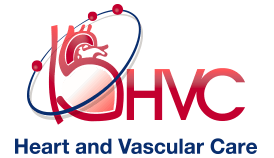Does Insurance Cover Vein Treatment?
Posted by: Heart and Vascular Care in Vein Disease on March 21, 2019

Besides finding a reputable physician to provide treatment, the expense of having venous disease treated is one of the most important factors that patients consider when making the decision to come in for an evaluation. The cost of vein treatment usually depends on several factors, such as what symptoms you are having, what type of treatments you may need, and whether they are considered “medically necessary” by your insurance company.
Venous insufficiency can cause your legs and feet to swell, feel painful, heavy or tired, and can even contribute to cramps and restless legs. It may also cause unsightly ropey varicose veins or discolored spider veins. It’s likely that if you are suffering from any of these symptoms, you are hoping for easy and cost-effective relief; however, it is important to know that insurance companies often make a distinction between treatments that are deemed “medically necessary” and those that aren’t, which can affect insurance coverage. To better understand how insurance companies view treatment, we must answer the question, “What is Vein Disease?
The main responsibility of veins is to return blood from the rest of the body back to the heart. However, there are several challenges these veins face, the most impactful of which is gravity. The blood in your legs has to fight against gravity as it makes its way to the heart. Your calf muscles act as pumps to push the blood upwards in veins, sending it back to the heart. To help with this, veins have one-way valves that when working properly prevent blood from falling backwards, keeping it flowing towards the heart.
Certain risk factors, such as occupations that require long periods of standing or sitting, obesity, pregnancy, or genetic predisposition, can cause the valves in your veins to weaken. In these situations, the blood that should be headed towards the heart begins to flow backwards and can pool in the legs. In turn, the veins become enlarged and lead to the painful condition that many patients know all too well.
What does “Medically Necessary” Mean?
Most insurance companies have certain criteria to distinguish between medical versus cosmetic treatment of veins. They look at the patient’s symptoms, the physician’s exam, and if any underlying venous disease is detected on a venous ultrasound. All of these factors are evaluated when determining if treatment will be considered medically necessary. Most insurance companies also require patients to try conservative measures before approving any procedures. These typically include wearing compression socks, elevating your legs, and taking over the counter medication for pain relief.
Treatment Options
The only way to accurately diagnose your venous disease and to decide whether any procedures are likely to be covered by insurance is to have a complete ultrasound assessment with a registered vascular technologist (RVT). Fortunately, the initial visit is usually covered by most insurance companies.
Contact Heart and Vascular Care today to schedule your consultation. Once our award-winning physicians assess your individual treatment needs, we can further discuss procedure options and insurance coverage.
